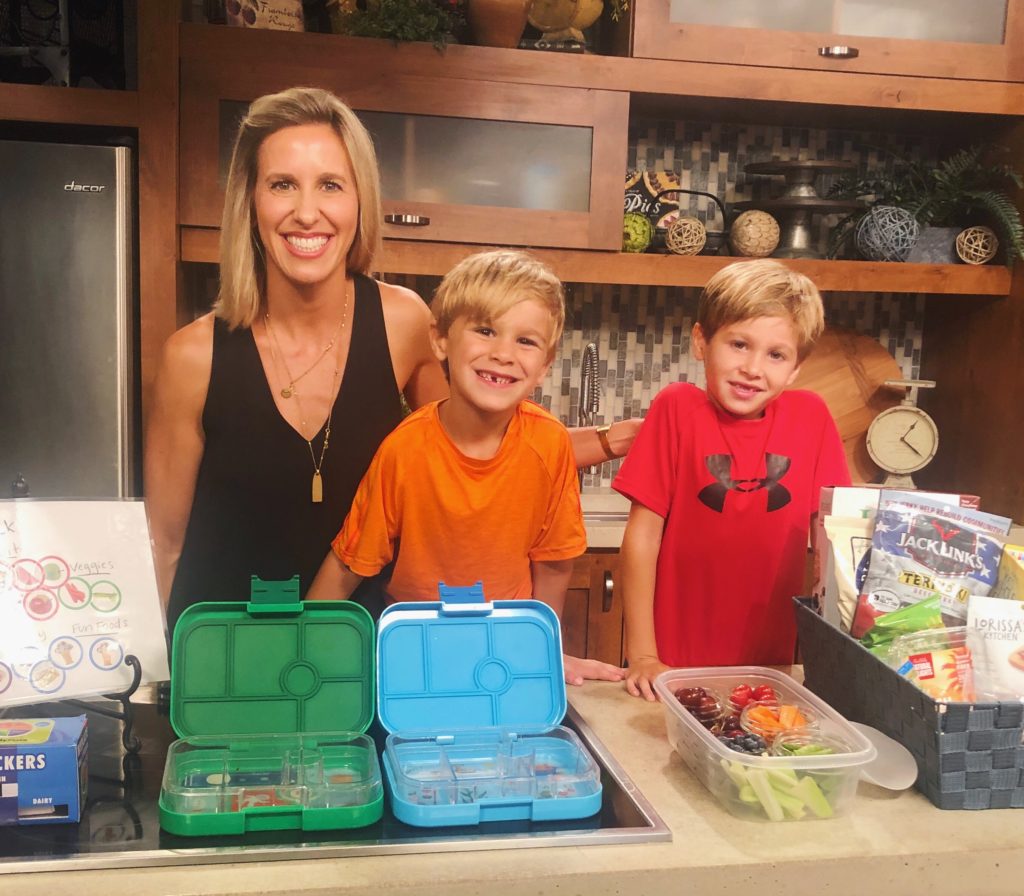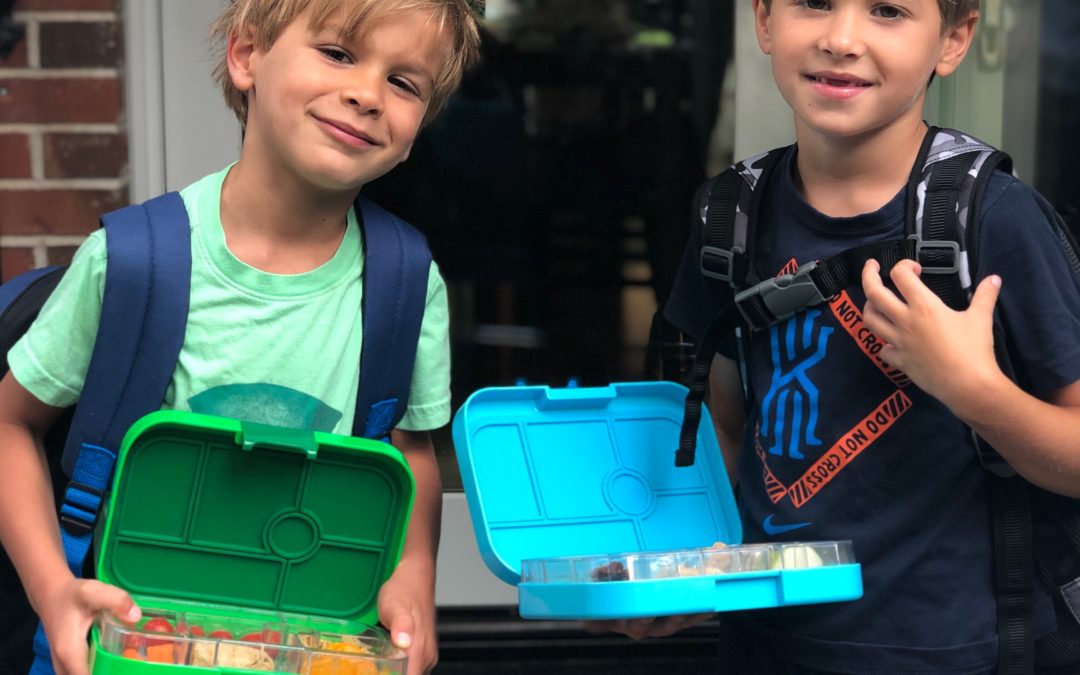Last week as my husband was helping me pack our son’s lunches for camp and he asked: “how much longer will we be doing this?” So I did some math. Three kids x ~175 days of school say through 5th grade = 3,150 lunches. That doesn’t include summer camp. Let’s also keep in mind they don’t all want the same thing!
This conversation coincided with our current effort to enlist our boys to help out a bit more around the house. While we felt picking up toys, putting away laundry, and helping with mealtime are BASIC requests; it was a CHORE to get them to do it.
Watch Jennifer and her two sons, Jack and Patrick talk about packing a healthy lunch on Great Day St. Louis.

Packed School Lunch + Other Chores
My current skill set of getting them help with chores included: hovering, nagging, and threatening. These strategies didn’t feel right, so I took an online “chores” class by my favorite parenting expert, Susan Stiffelman. Here are my class clif notes:
- See it through their eyes. Children live in the present. If they’re enjoying what they’re doing—watching TV, shooting hoops or playing with their siblings doing something less “pleasant” isn’t going to be something they desire to do.
- Don’t pay or reward kids for “noble chores” or things they should be doing to maintain a normal, orderly house
- Make it fun. Put on music, turn it into a game of who can find their clothes in the laundry pile the fastest, etc
- Create rituals. Every Saturday, we help out around the house for x amount of time. Before bed, we clean up 10 items in their room, etc.
- Let them see you ENJOY chores. Doing dishes can be meditative to feel the warm water and suds while you rinse and wash. THIS IS A STRETCH for me!
- Help kids notice how it feels to start and finish a project and to enjoy it. Do they notice how they feel when they have an orderly, clean room compared to a messy, smelly one.
In a nutshell, kids have to be intrinsically motivated and empowered with a splash of help from mom and dad depending on their age. This, I felt could be applied to packing their lunch.
A 5-STep Guide to a Packed School Lunch
- Start SMALL. Start small if your kids are small! Our goal is for my kids to pack their lunch one night a week. Sunday night usually works best because lunch boxes are clean and ready. Once we get a good handle on it, we’ll increase the frequency.
- Learn Their Food Preferences. To get them thinking about how to pack a balanced lunch, I bought some food group stickers (see below), and they selected their favorite foods from each group. This gave me an idea of what items to keep on hand. You could also do this by taking them to the grocery or include them in online grocery ordering.
- Box Them In. Box them by food groups. What kind of grain do you want your sunflower seed butter on? Waffles? Crackers? Or Raisin Bread? For fruit, do you want grapes, strawberries or raisins? Will help a younger child make a quicker, healthy decision. I love the bento box lunch containers we use because the food groups are pre-labeled. This puts the balanced food group rule on the container, not mom. (See below for our favorite bento box)
- Pre-Prep for Them: To help expedite a potentially, painfully slow process, have lunch items ready to go. We keep cut up carrots, washed fruit, etc ready to go. Pre-prepped produce can be done once and used all week. I love Real Mom Nutrition’s idea of having lunch stations ready. This is especially helpful for younger children.
- Hand Over the Control: If you’re handing the task over, let them have some say. I find myself wanting to correct a uni-colored lunch of turkey, crackers, cookies, and celery. It might not have been how I would have packed it, but if the goal is empowerment, they need to feel empowered. They can also choose one fun food like cookies. Thanks to the small bento box portion, it’s kind of impossible to go overboard.
Short-Term Versus Long-Term Parenting
It takes time and energy to get into a new lunch packing routine, but like anything, if you stay the course, it should get easier. Short-term parenting offers an immediate, desirable outcome – like doing something yourself. Long-term parenting is more focused on helping shape your child’s future to feel empowered, independent adults. As you would imagine, it’s more difficult and requires more patience and thought.
Start Practicing: School Lunch
The school year is right around the corner, so have some “fun” practicing now. You might be surprised when you open up an empty lunch box on the first day of school. Kids tend to eat better when they had a say. And for you? I think the benefit is clear.

Check out our other posts for healthy school lunch ideas:
Thinking Outside the Lunch “Box”
5 Healthy Lunch Box Ideas


